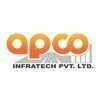Production Planning Control Engineer
20+ Production Planning Control Engineer Interview Questions and Answers

Asked in Hyundai Steel

Q. vendor followups and how planning done when schedule not met
Vendor followups and planning when schedule not met
Regular follow-ups with vendors to ensure timely delivery
Identify the root cause of schedule delay and take corrective actions
Re-plan the production schedule with updated delivery dates
Communicate the revised schedule to all stakeholders
Monitor the progress and take necessary actions to ensure on-time delivery

Asked in Ashok Leyland

Q. What is thermodynamics and what are the types. give example for each laws.
Thermodynamics is the study of energy and its transformations in physical systems. There are four laws of thermodynamics.
First law of thermodynamics: Energy cannot be created or destroyed, only transferred or converted. Example: A car engine converting fuel into mechanical energy.
Second law of thermodynamics: The total entropy of an isolated system can never decrease over time. Example: Heat flowing from a hot object to a cold object.
Third law of thermodynamics: As temperatur...read more
Production Planning Control Engineer Interview Questions and Answers for Freshers

Asked in Ashok Leyland

Q. What is an Iron-carbon diagram? Could you explain it briefly?
Iron-carbon diagram is a graphical representation of the phases that form in iron-carbon alloys as a function of temperature and carbon content.
Shows the phases that form in iron-carbon alloys at different temperatures and carbon contents
Consists of regions for austenite, ferrite, cementite, and pearlite
Helps in understanding the microstructure and properties of steel
Used in heat treatment processes to control the final properties of steel

Asked in Andritz Hydro Location India

Q. Types of material used in an industry.
Materials used in industries include metals, plastics, ceramics, and composites.
Metals such as steel, aluminum, and copper are commonly used for construction and manufacturing.
Plastics like polyethylene and PVC are used in packaging, automotive parts, and electronics.
Ceramics like porcelain and glass are used in construction, electronics, and medical implants.
Composites made of fibers and resins are used in aerospace, automotive, and sports equipment.
Other materials like wood...read more

Asked in Panasonic Life Solutions India

Q. What are the different techniques used for inventory management?
Various techniques for inventory management optimize stock levels, reduce costs, and improve efficiency in production processes.
Just-In-Time (JIT): Reduces inventory holding costs by receiving goods only as needed. Example: Toyota's production system.
Economic Order Quantity (EOQ): Calculates the optimal order quantity to minimize total inventory costs. Example: A retailer using EOQ to manage stock.
ABC Analysis: Categorizes inventory into three classes (A, B, C) based on impor...read more

Asked in Panasonic Life Solutions India

Q. What is the strategic approach for production planning and control?
A strategic approach to production planning and control optimizes resources, aligns production with demand, and enhances efficiency.
Define clear production goals aligned with business objectives, such as increasing market share or reducing lead times.
Implement demand forecasting techniques, like historical sales data analysis, to anticipate customer needs and adjust production schedules accordingly.
Utilize inventory management strategies, such as Just-In-Time (JIT), to minimi...read more
Production Planning Control Engineer Jobs




Asked in Ashok Leyland

Q. What are case hardening and carburizing processes?
Case hardening is a process of hardening the surface of a metal while leaving the interior soft, while carburizing is a process of introducing carbon into the surface of a metal to increase its hardness.
Case hardening involves heating the metal in the presence of a carbon-rich environment, followed by quenching to harden the surface.
Carburizing involves introducing carbon into the surface of the metal through diffusion at high temperatures.
Both processes are used to increase ...read more


Q. How do you eliminate and manage shortages?
Shortage can be eliminated and managed through effective production planning, inventory management, supplier relationships, and communication.
Implement accurate demand forecasting to prevent shortages
Maintain safety stock levels to buffer against unexpected demand spikes
Establish strong relationships with reliable suppliers to ensure timely deliveries
Utilize production scheduling tools to optimize production efficiency
Regularly communicate with all stakeholders to address pot...read more
Share interview questions and help millions of jobseekers 🌟

Asked in R&D Engineers

Q. Could you provide a sketch design for the specified material?
A sketch design for specified material involves outlining dimensions, properties, and intended use for effective production planning.
Material Specifications: Clearly define the type of material, such as steel, plastic, or composite, including its properties like tensile strength.
Dimensions: Provide accurate measurements for length, width, height, and any tolerances required for the production process.
Intended Use: Describe the application of the material, such as automotive p...read more
Asked in Velvin Paper Products

Q. Which ERP software have you used?
I have experience working with SAP ERP software.
I have worked with SAP ERP software for production planning and control.
I am familiar with the modules of SAP ERP such as Material Management (MM), Production Planning (PP), and Sales and Distribution (SD).
I have also worked with other ERP software such as Oracle and Microsoft Dynamics.
I am comfortable learning and adapting to new ERP software as per the company's requirement.

Asked in Apco Infratech

Q. How can steel wastage be controlled?
Steel wastage can be controlled by implementing efficient production processes, proper inventory management, and regular maintenance of equipment.
Implementing efficient production processes to minimize errors and reduce scrap
Proper inventory management to avoid overstocking and material damage
Regular maintenance of equipment to ensure optimal performance and prevent breakdowns
Training employees on proper handling and cutting techniques to minimize wastage
Recycling scrap steel...read more

Asked in Hitachi

Q. How can the company reduce waste?
Implementing lean manufacturing principles, optimizing production processes, and reducing material waste can help save company wastage.
Implement lean manufacturing principles to reduce waste in production processes
Optimize production schedules to minimize downtime and maximize efficiency
Reduce material waste by implementing recycling and reusing strategies
Regularly review and analyze production data to identify areas of improvement
Train employees on waste reduction techniques...read more
Asked in Zyberspace

Q. How do you control inventory?
Inventory is controlled through proper planning, monitoring, and optimization.
Establishing minimum and maximum inventory levels
Regularly monitoring inventory levels and adjusting orders accordingly
Implementing a first-in, first-out (FIFO) system
Utilizing inventory management software
Collaborating with suppliers to ensure timely delivery
Conducting regular physical inventory counts


Q. How do you ensure customer schedules are met?
To meet customer schedule, prioritize tasks, optimize production processes, communicate effectively with stakeholders, and utilize tools like ERP systems.
Prioritize tasks based on customer deadlines and production capacity
Optimize production processes to reduce lead times and increase efficiency
Communicate effectively with stakeholders to ensure alignment on schedules and expectations
Utilize tools like ERP systems to track progress, identify bottlenecks, and make data-driven ...read more

Asked in Quess

Q. What do you know about Excel?
Excel is a powerful spreadsheet program used for data analysis, calculations, and visualization.
Excel is used for organizing and analyzing data through spreadsheets.
It allows for complex calculations and formulas to be applied to data.
Excel can create charts and graphs to visualize data trends.
It is commonly used in business for budgeting, forecasting, and inventory management.
Excel can be integrated with other software tools for data import and export.

Asked in Worley

Q. What is Bernoulli's principle?
Bernoulli's principle states that an increase in the speed of a fluid occurs simultaneously with a decrease in pressure or a decrease in the fluid's potential energy.
States that as the speed of a fluid increases, its pressure decreases
Used to explain lift in airplane wings
Applies to the flow of liquids and gases

Asked in Andritz Hydro Location India

Q. Types of protective coating
Protective coatings are used to prevent corrosion, wear and tear, and other forms of damage to surfaces.
Epoxy coatings
Polyurethane coatings
Acrylic coatings
Zinc coatings
Aluminum coatings
Ceramic coatings
Asked in Venus Hotelware

Q. How do you plan machine utilization?
Machine planning involves creating schedules and workflows for manufacturing processes to optimize production efficiency.
Analyze production requirements and available resources
Create a detailed production schedule based on order priorities
Coordinate with different departments to ensure smooth workflow
Optimize machine utilization to minimize downtime
Implement lean manufacturing principles to improve efficiency
Use software tools like ERP systems for planning and tracking
Regular...read more
Asked in Chintamani Thermal Technologies

Q. What is the production process?
Production process is a series of steps involved in manufacturing a product, from raw materials to finished goods.
Production process involves converting raw materials into finished goods through a series of steps.
It includes planning, scheduling, executing, and monitoring the production activities.
Examples of production processes include assembly line manufacturing, batch production, and continuous production.
Efficient production processes help in reducing costs, improving qu...read more

Asked in Royal Enfield

Q. How do you manage materials?
Effective material management ensures optimal inventory levels, reduces waste, and enhances production efficiency.
Implement Just-In-Time (JIT) inventory to minimize holding costs and reduce waste. For example, ordering materials only as needed.
Utilize an ERP system for real-time tracking of materials, which helps in forecasting demand and managing stock levels efficiently.
Conduct regular audits of inventory to identify slow-moving items and adjust purchasing strategies accord...read more

Asked in TCS

Q. What is Routing?
Routing is the process of determining the most efficient path for materials or information to flow through a production system.
Routing involves determining the sequence of operations and work centers through which a product will pass during manufacturing.
It helps in optimizing production processes by minimizing delays and maximizing efficiency.
Examples of routing decisions include selecting the best machine for a particular operation and determining the order in which tasks s...read more

Asked in TIAA Global Business Services

Q. What is yield?
Yield refers to the amount of usable product obtained from a manufacturing process.
Yield is calculated by dividing the amount of usable product by the total amount of raw materials used.
It is an important metric for production planning and control as it helps to identify inefficiencies in the manufacturing process.
Factors that can affect yield include equipment malfunction, operator error, and variations in raw materials.
For example, if a company produces 100 units of a produ...read more
Asked in Venus Hotelware

Q. How do you plan for Raw Materials?
RM planning involves forecasting raw material requirements, creating production schedules, and ensuring timely availability of materials.
Forecasting raw material requirements based on production schedules
Creating a detailed plan for procurement and delivery of raw materials
Coordinating with suppliers to ensure timely availability of materials
Monitoring inventory levels to prevent shortages or excess stock
Adjusting plans as needed based on changes in production demand
Asked in Chintamani Thermal Technologies

Q. How does the work process function?
Effective process work involves planning, execution, monitoring, and continuous improvement to optimize production efficiency.
Define objectives: Establish clear goals for production, such as reducing lead times or increasing output.
Analyze current processes: Use tools like value stream mapping to identify bottlenecks and inefficiencies.
Develop a production plan: Create a detailed schedule that outlines resources, timelines, and responsibilities.
Implement the plan: Coordinate ...read more

Asked in Titan Eye Plus

Q. What is PPC?
PPC stands for Production Planning and Control, focusing on optimizing manufacturing processes and resource allocation.
PPC involves forecasting demand to ensure adequate production levels.
It includes scheduling production runs to maximize efficiency, e.g., using Gantt charts.
Inventory management is a key aspect, ensuring materials are available without overstocking.
PPC utilizes tools like ERP systems to streamline operations and improve communication.
It aims to minimize produ...read more

Asked in Koyo Bearings India

Q. Forms of fluid ?
Fluids can exist in various forms such as liquids, gases, and plasmas.
Fluids can be classified as liquids, gases, and plasmas.
Liquids have a definite volume but no definite shape, gases have neither definite volume nor shape, and plasmas are ionized gases.
Examples of liquids include water, oil, and blood, while examples of gases include air, helium, and carbon dioxide.
Plasmas are found in lightning, stars, and some types of flames.

Asked in Ashok Leyland

Q. Define the steps for Production Planning and Control (PPC).
Production Planning Control (PPC) involves systematic steps to optimize production processes and resource allocation.
1. Demand Forecasting: Analyze market trends to predict product demand. Example: Using historical sales data to forecast next quarter's demand.
2. Capacity Planning: Assess production capacity to meet forecasted demand. Example: Evaluating machine availability and workforce skills.
3. Scheduling: Create a detailed production schedule to allocate resources efficie...read more
Interview Experiences of Popular Companies






Calculate your in-hand salary
Confused about how your in-hand salary is calculated? Enter your annual salary (CTC) and get your in-hand salary


Reviews
Interviews
Salaries
Users










